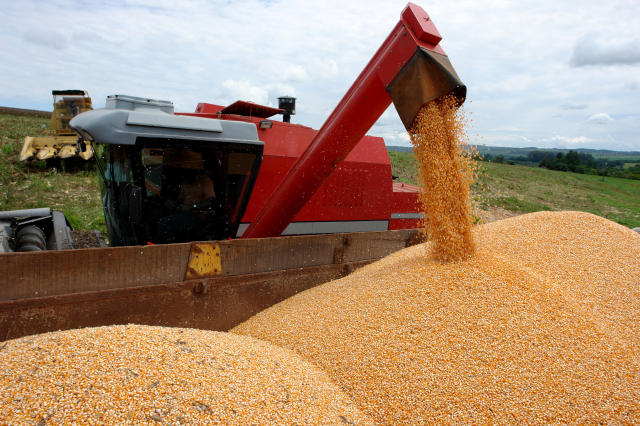São Paulo – Maize production has gained strength in Brazil recently and could keep growing in this crop, with sector institutions expecting a new record-breaking volume. According to the Brazilian National Supply Company (CONAB), the maize harvest could reach 125 million tonnes in the 2022/2023 crop, up 10% from the previous period.
The sound performance is primarily due to the winter crop, which started small but today is accountable for most of the maize produced in the country. Due to the winter crop, even with the impact of droughts on the summer crop harvested in the southern region, the total Brazilian output could still be sufficient for the domestic and foreign markets.
A few decades ago, Brazil began planting the second crop in the Midwest, interspersing its production with soybean. Thus, the country took advantage of the warm climate of states such as Goiás to produce maize even during the winter. The optimized production of two crops in the same area made maize growth in Brazil a structural issue. “It’s here to stay,” said Enilson Nogueira, chief analyst for agricultural markets at Céleres consultancy firm.
For Nogueira, the winter duo of maize and soybean makes production more competitive. “This makes the cost lower compared to other countries. And the fact we have gained space in the international market is due to competitive prices and an optimized two-harvest business model,” said Nogueira in an interview with ANBA.
According to him, another factor to highlight is the growth of the crop area. “We expect to have, in the winter harvest, 1 million hectares more. We have this stimulus in response to profitability. Producers are still glimpsing attractive prices, and it can get interesting because it is this crop we target for exports, including to Arab countries,” said Nogueira.
Booming exports
The expert recalled the production surplus could also result in increased shipments abroad. “If [the production record] is confirmed, and we have a long way to go, we foresee an outlook with Brazil exporting 49 to 50 million tonnes between late 2023 and early 2024, which would also be a record. And, in practice, from the moment we have high productivity, we gain international competitiveness,” he pointed out.
Brazilian exports gained momentum in recent years, with the country conquering ground in the foreign market and capturing markets such as China. The movement was mainly due to external factors such as the conflict in Ukraine, which until then was the world’s second-largest maize exporter, and weather issues such as the drought that hit the United States.
For André Sanches, a researcher at the Center for Advanced Studies in Applied Economics of the University of São Paulo (CEPEA-USP), the structured growth of maize was the basis for Brazil to export more to the world. “Last year, while other players suffered from climate issues, Brazil benefited from a record harvest and supplied the global market. This year also has the prospect of a record-breaking harvest. Egypt, for instance, was the fourth leading buyer, and Saudi Arabia bought over 1 million tonnes of Brazilian maize. Brazil has stood out for its production capacity and selling at competitive rates,” concluded Sanches.
But is it possible to keep the new buyers from the last harvests? “We don’t see a change of scenery. [Brazil’s productivity] is a structural thesis, a conjuncture. In addition to Brazil being structurally competitive, countries like China have already started looking for Brazilian maize,” concluded Nogueira, recognizing demand from the Asian giant, which is increasingly purchasing the product abroad, and now competes with Arab nations for Brazilian maize.
Translated by Elúsio Brasileiro




